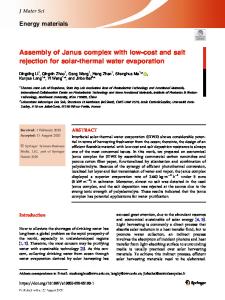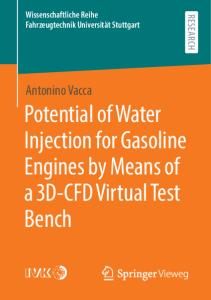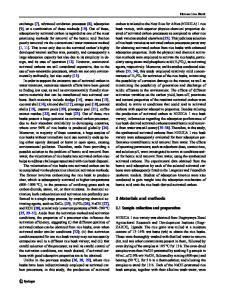Enhancing solar water evaporation with activated carbon
- PDF / 495,953 Bytes
- 10 Pages / 432 x 648 pts Page_size
- 34 Downloads / 346 Views
MRS Advances © 2020 Materials Research Society DOI: 10.1557/adv.2020.267
Enhancing solar water evaporation with activated carbon Sai Kiran Hota, Gerardo Diaz School of Engineering, University of California Merced, Merced, CA. 95343
ABSTRACT
Fresh water production through sustainable approaches such as solar thermal sources is attracting widespread attention. One of the recently developed approaches aims at utilizing black particles to enhance evaporation and steam generation through efficient photo-thermal conversion process in direct solar thermal desalination systems. Activated carbon serves as one such material for meeting the objectives of freshwater production with negligible increments in cost of the overall system. A series of chemical and physical characterizations were performed to explore the possibility of using activated carbon as a stable carbon source. Optical characterization showed granular activated carbon to have 96.35% solar absorptance and its dispersion in water to have less than 1.5% transmittance (absorbance of 1.85) at 100 mg/L concentration. Outdoor experiments were performed at the University of California-Merced in the month of September (2019), with peak irradiation of 0.8 suns. The comparative measurements showed that the total evaporation enhancement was 38% and 100% for granular activated carbon and activated carbon dispersions, respectively, when compared to pure DI water.
INTRODUCTION Water-Energy-Environment nexus has expanded the scope of desalination by means of utilizing renewable sources of energy. Commercial systems such as reverse osmosis (RO), multi-effect desalination (MED), and multi stage flash desalination (MSF), can be powered by sources such as geothermal or solar PV / thermal [1] and these serve as indirect collection systems. Significant contribution has also been aimed at improving productivity of direct solar collection systems such as solar stills, which are more suitable for small residential communities. While research has been aimed at modifying geometry, 1
Downloaded from https://www.cambridge.org/core. Access paid by the UCSB Libraries, on 28 Jun 2020 at 06:54:04, subject to the Cambridge Core terms of use, available at https://www.cambridge.org/core/terms. https://doi.org/10.1557/adv.2020.267
the last decade witnessed significant increase in enhancing the photo-thermal property of base fluid by means of nano dispersions and interfacial floating structures. Several materials such as plasmons[2], semiconductors[3], carbon based materials and composites [4,5] have been investigated. Carbon based materials seem to be ideal photo-thermal materials compared to plasmons or composites due to their lower cost and broadband solar absorption spectrum. Numerical studies showed that the optical constants of these materials influenced the photo-thermal conversion potential in the base fluid. Carbon black (CB), carbon nano tubes (CNT’s), graphene oxide (GO and reduced GO), have been investigated as suitable carbon materials as both nano dispersions and as solar abso
Data Loading...











